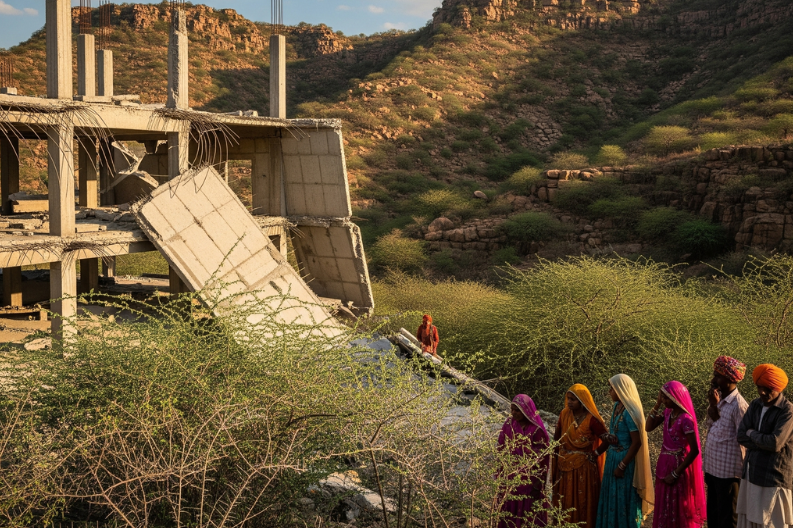Demolitions in the Aravalli have begun in Faridabad as the Haryana government moves against illegal constructions on this ecologically fragile land. Acting on a Supreme Court order from 2022, officials have already cleared 241 properties since June, sparking sharp debates among villagers, property owners, politicians, and environmentalists.
Among the structures demolished was Amrit Green, a popular wedding venue at the foothills. The court has stressed that the Punjab Land Preservation Act of 1900 prohibits construction in the region to prevent ecological harm. A survey found over 6,000 unauthorized structures across villages like Ankhir, Mewla Maharajpur, Lakkarpur, and Anangpur. Officials have already cleared 265 acres, with more action planned.
At the heart of the dispute lies land ownership. Villagers argue that community lands, or shamlat deh, belong to them. They point out that these lands historically came under village councils until government rules changed in the 1970s. And it enables sales to real estate developers. Officials, however, insist the land falls under legal protection.
Political leaders have taken sides. Union Minister Krishan Pal Gurjar and Congress MP Deepender Singh Hooda back the villagers, alleging bias in the demolition drive. Meanwhile, protests and a Jan Andolan movement have spread in Anangpur, demanding fair recognition of land rights.
The demolitions are also hurting the farmhouse economy. Venues like Mahipal Green Valley once hosted lavish celebrations but now lie closed. The loss affects not only property owners but also event planners, caterers, and florists whose livelihoods depend on weddings and parties.
Environmentalists warn that years of illegal mining and construction have scarred the Aravallis. The current demolitions are seen as a last-ditch effort to restore balance. Forest officials confirm that more demolitions are coming to reclaim lost green cover.
For villagers, the fear of losing homes and livelihoods looms large. Residents like Prem Krishna Arya argue they have lived in the Aravallis for centuries, only to now see their properties torn down. While Chief Minister Nayab Singh Saini has promised to consider community concerns, many villagers feel excluded from the decision-making process.
Looking ahead, villagers are preparing legal battles, collecting documents, and drawing support from khap leaders who have pledged solidarity. They hope for a compromise that protects both community rights and environmental needs.
In conclusion, Demolitions in the Aravalli underline the clash between conservation and development. The Supreme Court’s directions demand urgent compliance, yet the voices of villagers who have called this land home for generations remain central. The coming months will decide whether ecological preservation and community survival can find common ground.



